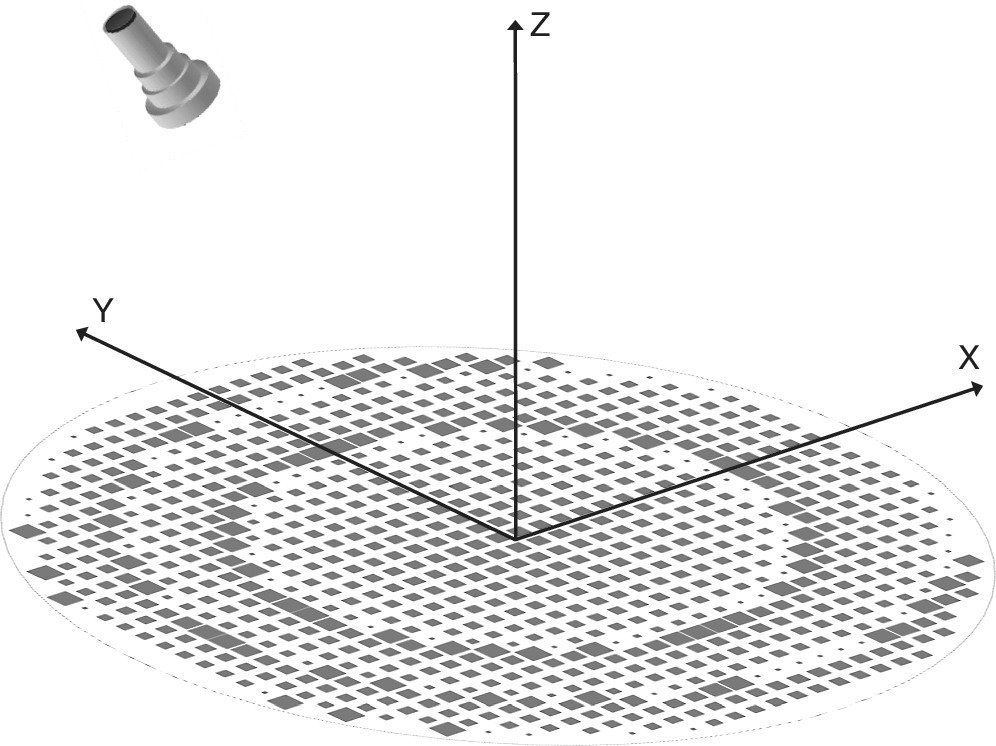2Analysis and Design of Reflectarray Elements
A reflectarray antenna consists of a planar or conformal array of elements that are excited with a feed antenna [1]–[3]. A typical model of a reflectarray antenna is given in Figure 2.1. Each element is designed such that when it is illuminated by the feed antenna, it incorporates a certain reflected phase. The phase distribution over the reflectarray aperture is then synthesized so the reflectarray can realize a collimated or shaped beam in the desired direction. As such, analysis and design of the reflectarray elements, typically referred to as phasing elements, is of paramount importance.

Figure 2.1 Typical geometry of a planar reflectarray antenna.
There are two steps in the design of a reflectarray, namely, the element design and the system design. The element design will be discussed in this chapter, and the system design will be discussed in the following chapters. In this chapter, we will first study the basics of designing the phase distribution on the reflectarray aperture. Next, we will outline the phase tuning approaches for reflectarray elements. In other words, how the individual elements are designed to scatter electromagnetic waves with the desired phases. Moreover, numerical and analytical approaches for analysis of reflectarray phasing elements will be outlined, and several examples of reflectarray phasing elements ...
Get Reflectarray Antennas now with the O’Reilly learning platform.
O’Reilly members experience books, live events, courses curated by job role, and more from O’Reilly and nearly 200 top publishers.

